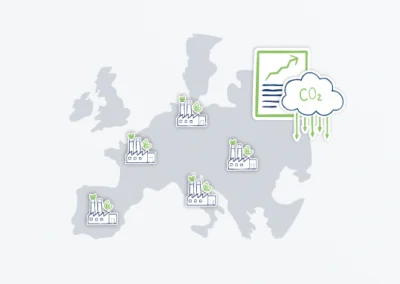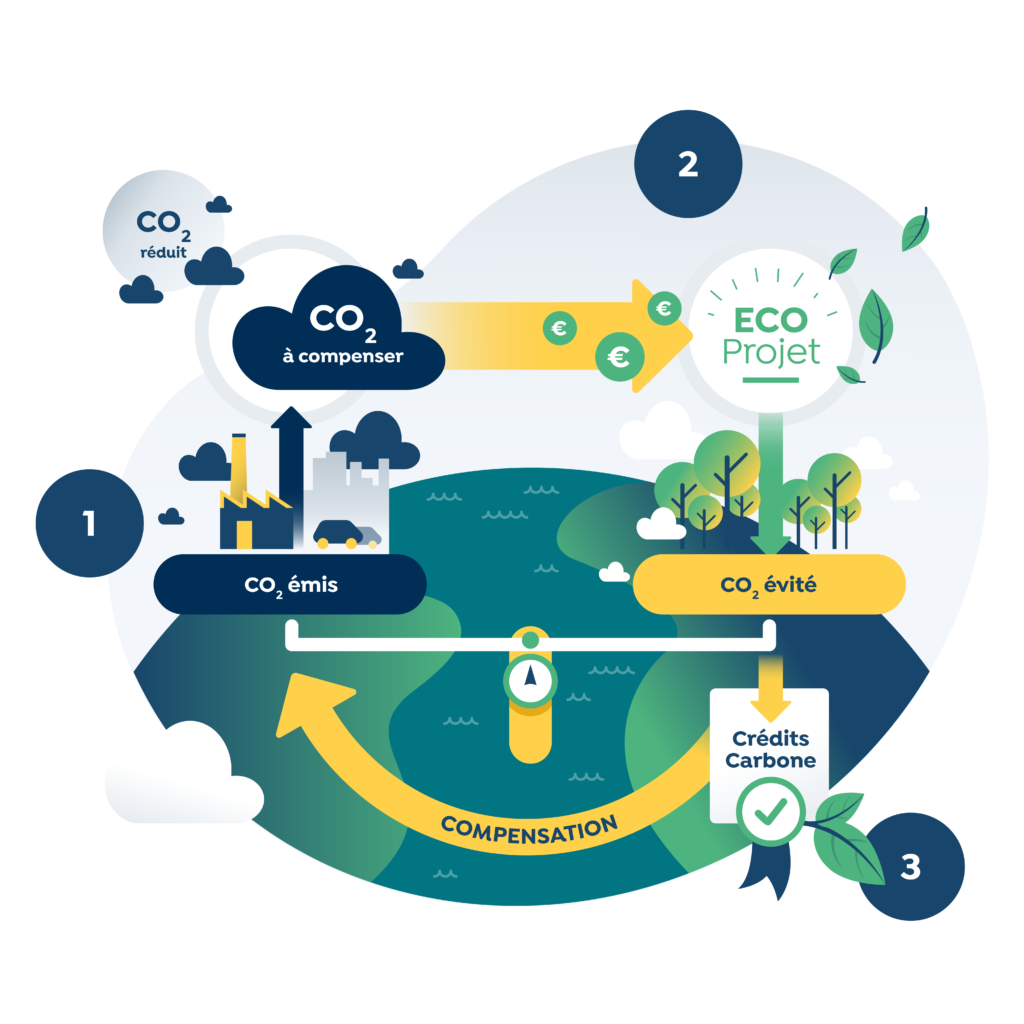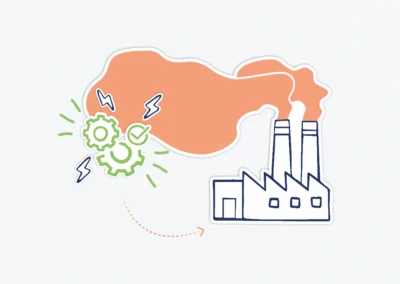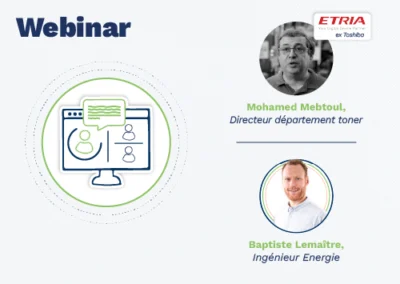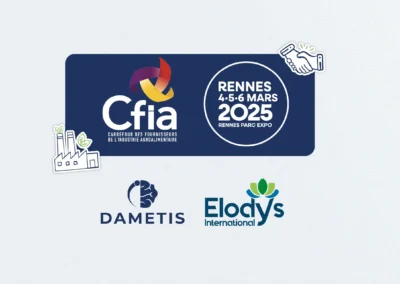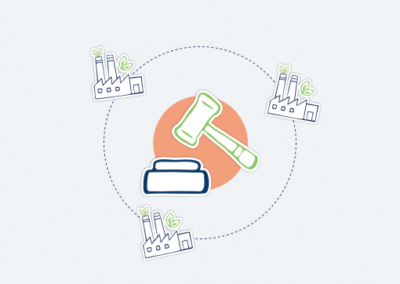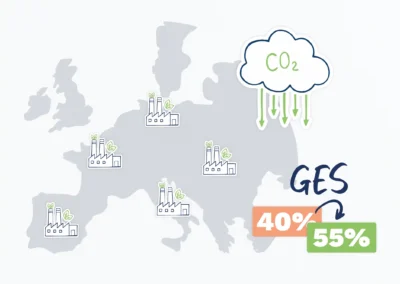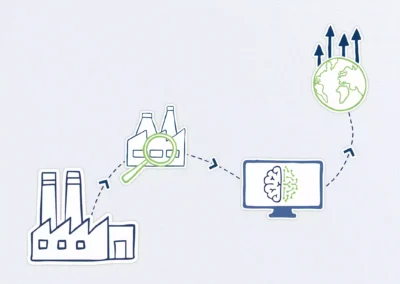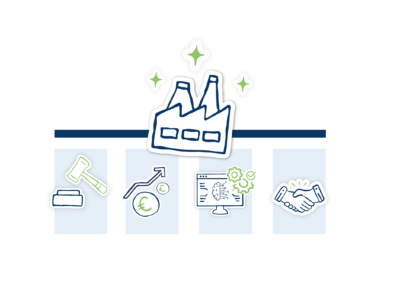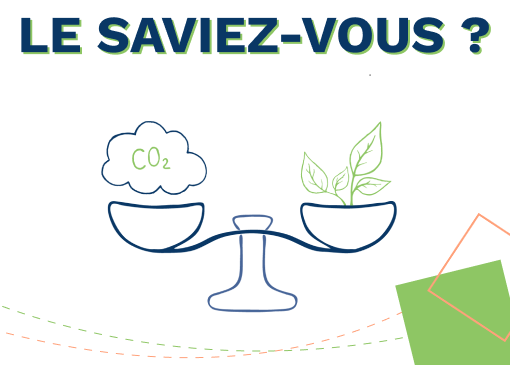
Carbon Offset: Definition and Challenges for the Industry
In a global context increasingly concerned with environmental issues, companies, especially industrial ones, are faced with the imperative to reduce their carbon footprint. Indeed, greenhouse gas emissions from industrial activities are one of the main sources of climate change.
It is in this context that carbon offsetting emerges as a promising solution.
But what exactly is carbon offsetting?
I. What is Carbon Offset?
Carbon offsetting involves reducing or offsetting a company’s greenhouse gas emissions by financing projects or actions that capture or reduce equivalent amounts of CO2 or other greenhouse gases.
This approach aims to achieve a balance between the emissions produced by the company and emissions reductions made elsewhere. It thus offers industrialists a way to reduce their environmental impact while maintaining their economic activity.
Carbon offsetting is based on the principle that all greenhouse gas emissions contribute to climate change, regardless of where they are emitted. Therefore, by supporting projects that reduce or capture these emissions elsewhere, companies can offset the environmental damage associated with their own activities.
It is important that offset projects are carefully selected to ensure they are credible, measurable, and have a real impact on reducing greenhouse gas emissions.
II. Challenges of Carbon Offset for Your Business
Carbon offsetting presents several important challenges for your business. Here are some of them:
- Reducing greenhouse gas emissions and associated costs: By financing offset projects, you can reduce your carbon footprint and the costs associated with reducing greenhouse gas emissions. For example, if you have significant emissions from your transportation activities, you can offset your emissions by financing reforestation projects, rather than investing in cleaner vehicles or alternative fuels.
- Improving your image and attractiveness for customers and investors: Consumers and investors are increasingly aware of the environmental impact of companies and seek to associate with companies taking steps to reduce their carbon footprint. By offsetting your greenhouse gas emissions, you can show that you take the issue seriously and are committed to combating climate change.
- Contributing to the fight against climate change and compliance with environmental regulations: Finally, carbon offsetting can contribute to the fight against climate change by financing projects that reduce or capture greenhouse gas emissions. It is increasingly observed that some environmental regulations may require companies to offset some of their greenhouse gas emissions to comply with environmental standards. For example, the European Union has established a carbon emissions trading system (ETS) to limit greenhouse gas emissions from companies. Companies emitting more than their quota must purchase carbon credits to offset their excess emissions.
Attention: It is important to emphasize that carbon offsetting should not be used to justify activities that have a negative environmental impact!
III. How to Implement a Carbon Offset Program?
Step 1
The first step is to assess your carbon footprint, i.e., the amount of greenhouse gases you emit as part of your activities. This assessment will help determine the most significant emission sources and define the necessary actions to reduce them at the source. Several tools and methodologies exist to conduct this assessment, including the Carbon Balance and ISO 14064 standards.
Step 2
Selection of carbon offset projects
Once your carbon footprint has been assessed, it is time to choose carbon offset projects to finance. The projects must be credible, measurable, and have a real impact on reducing greenhouse gas emissions. There is a wide variety of carbon offset projects, such as reforestation, wetland restoration, the use of renewable energies, carbon capture and storage, etc. You can choose projects that are directly related to your activity or that take place in the regions where you operate.
Step 3
Once carbon offset projects are selected, it is important to monitor their implementation and results. You can ensure that projects are carried out in accordance with international quality standards and that they achieve your set objectives in terms of reducing greenhouse gas emissions. The results should be communicated transparently to stakeholders in your company, such as your customers, investors, and employees, to strengthen your commitment to combating climate change.
Blog
Discover our latest articles
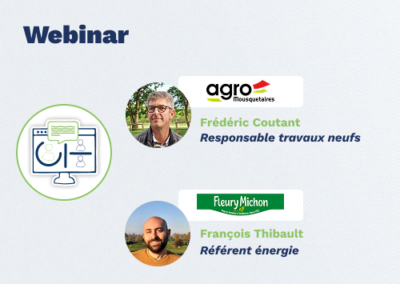
Webinar #5: How Etria optimizes its energy usage, reduces costs, and calculates the carbon footprint of its finished products
